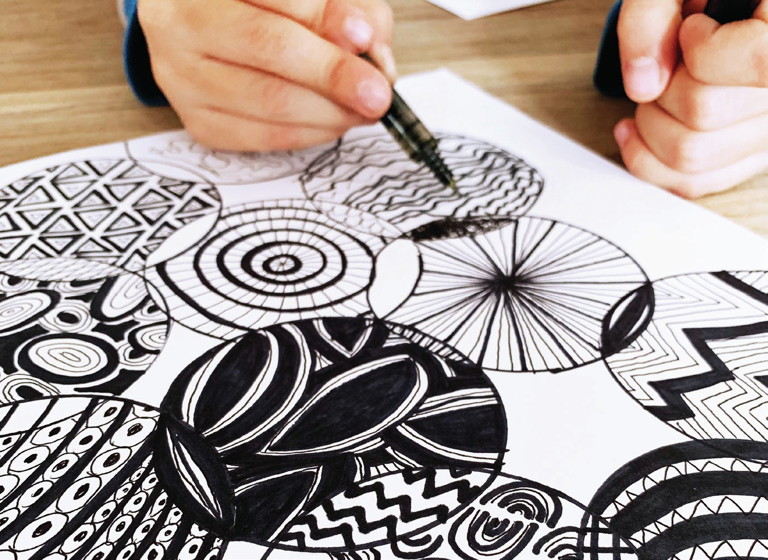MANAGING THE ART ROOM
Modes of Mindful Art-Making

A student working on a Zentangle design, an example of repetitive work.
Katie Gill-Harvey
Mindfulness is one of those words I feel like I see everywhere these days, and like with so many other popular buzzwords, it seems like there are lots of different definitions for what mindfulness actually means. For me, mindfulness is any activity that turns your attention inward and gives you a chance to really listen to the information your body, brain, and senses are trying to give you.
In our busy world, our brains are often bombarded with so much information that it can overwhelm our nervous systems, making it hard for us to recognize our own thoughts and feelings. We often see students (and adults) who seem stuck, overwhelmed, frustrated, and sometimes even angry or sad. Many people agree that this is why incorporating mindfulness practices in schools and classrooms is extremely important.
The arts provide students with opportunities to reflect and process, allowing them to express and identify the feelings they are working through each day.
The Art Room Is the Answer
This leads us to the question of how we can incorporate mindfulness in our schools. One great way is in the art room. The act of making art is unique in that it requires the simultaneous use of multiple different sensory systems. When multiple sensory systems work together, they reinforce the connections between our brains and our bodies.
Preview Mode - Subscribe to unlock full content


SchoolArts Magazine
Inspiring Creativity Since 1901
A national art education magazine committed to promoting excellence, advocacy, and professional support for educators in the visual arts.
Categories
Explore our inspiring content by topic